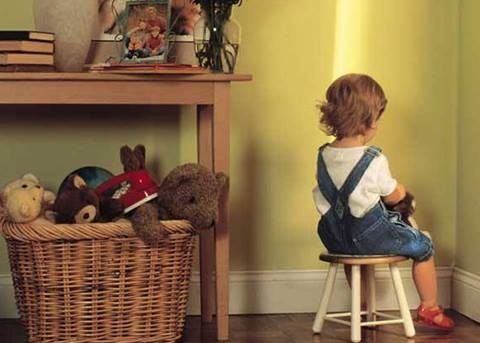ADHD Symptoms and How to deal with daily challenges
29/08/2016
-Ohana
-0 Bình luận
ADHD has three subtypes; predominately hyperactive-impulsive, predominately inattentive, and combined hyperactive-impulsive and inattentive. That means your child may have all of the symptoms in one category, or several from each.

ADHD/Inattentive Type
This is the child that gets labeled as lazy, spacey, ditzy or incompetent. His teacher may groan in frustration at how he daydreams and tunes out during class. She may come home with her sweater buttoned wrong, inside out or forgotten altogether. He may leave his glove at Little League – every single practice. Parents may have to deal with the terror of waiting at the bus stop for a child who doesn’t show up because he got on the wrong school bus and didn’t notice till it drove away. A child may lose friends because she forgets she was invited for a play date or walks right past playmates without seeing them because her mind is elsewhere.
A child must have had 6 of the following 9 symptoms for more than six months to be diagnosed with ADHD/inattentive type:
- Does not pay close attention to details, makes careless mistakes
- Often has trouble keeping attention on tasks
- Often does not seem to listen when spoken to directly
- Often does not follow through on instructions and fails to finish work or chores (because of failure to understand, not defiance)
- Often has trouble organizing activities
- Often avoids or dislikes things that take a lot of mental effort for a long period of time.
- Often loses things needed for tasks and activities
- Is often easily distracted
- Is often forgetful in daily activities
ADHD Hyperactive/Impulsive Type
Only about 5% of kids who have ADHD are classified as this type, which is typically diagnosed at preschool age. Most of those diagnosed will later go on to develop the inattentive or combined type.
People think of hyperactive and impulsive kids as wild, obnoxious, bratty problem children or, worst of all, just plain bad. She may grab toys and refuse to share long after others have gotten the concept. A hyperactive child will keep playing tag while his classmates line up. He may frighten or intimidate other children by pushing or yelling, or he could be the loveable, but virtually untamable class clown. Hyperactive kids are often daredevils, prone to taking flying leaps off the couch. Parents of hyperactive and impulsive kids dread calls from school or a neighbor asking them to come get their misbehaving child, and they’re driven to exhaustion by kids that never nap, sit still or stop talking.
A child must have 6 of the following 9 symptoms for more than six months to be diagnosed with ADHD/hyperactive-impulsive type:
- Often fidgets with hands and feet or squirms in seat
- Often gets up from seat
- Often excessively runs about our climbs when not appropriate
- Often has trouble playing or doing leisure activities quietly
- Is on the go as if driven by a motor
- Often talks excessively
- Often blurts out answers before questions have been finished
- Often has trouble waiting his turn
- Often interrupts or intrudes on others
ADHD Combined Hyperactive-impulsive and Inattentive Type
This is the most common type of ADHD, with symptoms of both the inattentive and hyperactive-impulsive types. Remember, not all children with ADHD display all the symptoms.
ADHD has three subtypes; predominately hyperactive-impulsive, predominately inattentive, and combined hyperactive-impulsive and inattentive. That means your child may have all of the symptoms in one category, or several from each.
The symptoms listed above come from the American Psychiatric Association’s Diagnostic and Statistical Manual IV, (DSM IV) and are the criteria a doctor would use to diagnose your child. However, because living, breathing kids are more than a collection of lists in a diagnostic manual, we’ll also provide some examples of how these behaviors can play out in real life.
For the behaviors listed below to be truly considered signs of ADHD, they must last for six months, be more severe than in other children the same age – i.e., they’re causing significant problems at school, home and/or in social settings -- and some symptoms should have been present before your child turned 7.
Trust your instincts to get your child's ADHD diagnosis and how to deal with daily challenges.
1. Your child needs your acceptance and help, not excuses.
Your son isn't just acting like a boy. Your daughter isn't just a daydreamer. ADHD is not something your child can control–right now. Just as our child might have to learn how to manage allergies or diabetes, he has to learn how to manage ADHD. You have to help.
2. Talk to your pediatrician.
It doesn't take a specialist to diagnose ADHD. Your pediatrician can do it with enough information from questionnaires filled out by you, teachers and caregivers, in addition to talking to your child.
3. Check your insurance policy.
Health insurance coverage of ADHD diagnosis and treatments are inconsistent. You may be eligible for some coverage even if you submit the claim yourself. The Affordable Care Act covers behavioral assessments and some treatments.
4. Communicate with the teacher.
Communication can't wait until official parent-teacher conferences. Teachers are busy, but they appreciate knowing they can partner with a parent. The same is true for other faculty members. They are your eyes and ears on the ground and part of your support system.

5. Use the school guidance office.
Our school periodically offers small group sessions for children to focus on social skills, anger management and other behaviors. Ask your school guidance counselor if your school offers something similar.
6. Request a teacher.
Write a letter to your principal outlining your child's challenges and request your child be placed with a teacher who is experienced with ADHD children.
7. Be patient and empathize.
Yelling only makes things worse. Connect with your child and let her know you hear what she's saying so she knows you are her ally.
8. Contact CHADD.
It has a number of helpful online resources at on its website and also offers support groups for parents. It's really comforting to know there are other parents out there struggling and who can expand your network of resources. Another really helpful resource is Lives in the Balance, which was founded by Ross Greene, Ph.D, and associate professor in the Department of Psychology at Virginia Tech, and focuses on the best ways to help behaviorally challenging kids.











